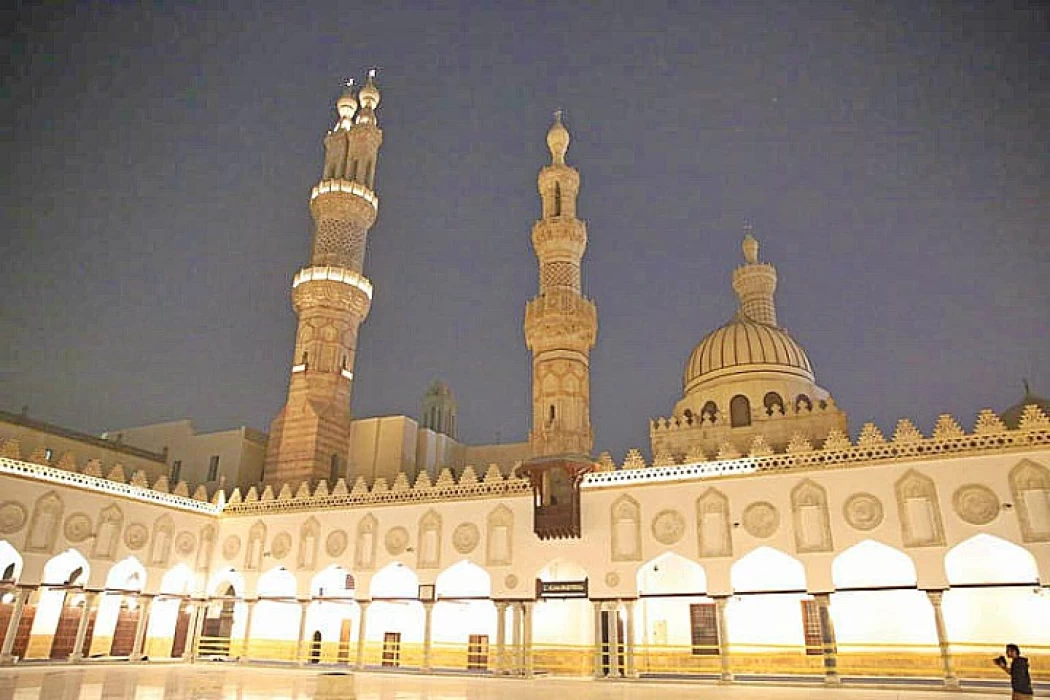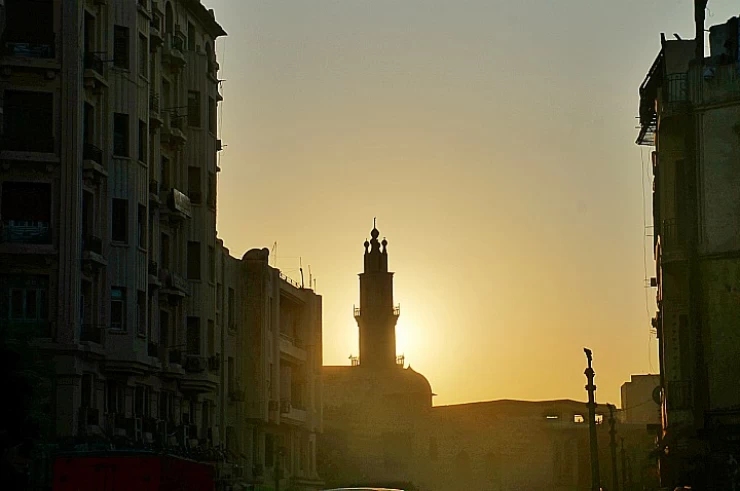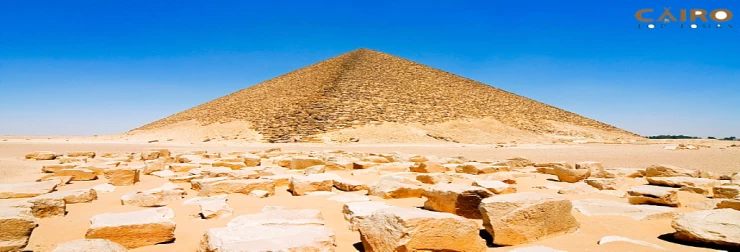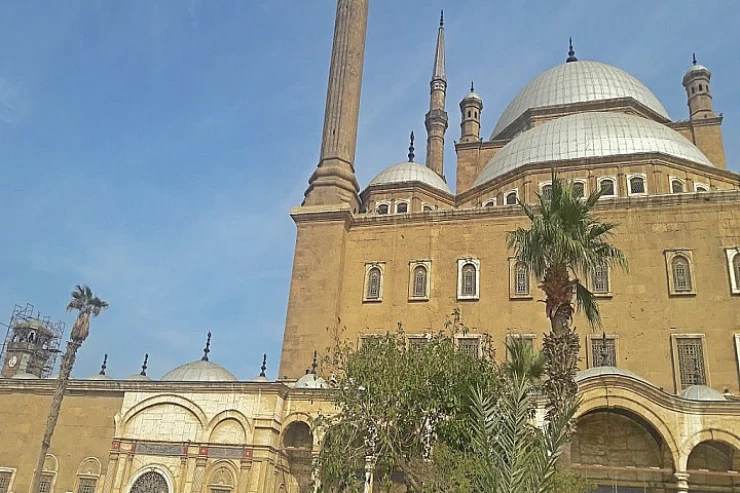
Al Azhar Mosque
Fact About Al Azhar Mosque
The Fatimid commander Gohar al-Saqali began building the Al-Azhar Mosque in Cairo one year after the establishment of the Fatimid capital to be the first mosque built during the Fatimid state in Egypt, and al-Saqali chose to name his new mosque that he built in the new capital after the Lady of the Women of the World, Fatima, the daughter of the Prophet Muhammad.
Its construction dates back to the beginning of the Fatimid dynasty in Egypt, in 361 AH/972 AD. Al-Azhar Mosque was originally built for the Fatimid Caliph Al-Mu'izz to pray in. It was founded by the Fatimid commander Jawhar al-Suqali.
At the time, the mosque was intended to be an educational institute to teach and spread the Shiite doctrine.
During the reign of Salah al-Din al-Ayyubi, who aimed to fight the Shiite doctrine and support the Sunni doctrine, the sermon was canceled, and it remained inactive for a hundred years.
Al-Azhar lost interest throughout the Ayyubid dynasty (567-648 AH) since the days of its founder, Commander Salah al-Din, although Sunni seminars continued to be held there.
Then Al-Azhar was restored to its scientific activity during the Mamluk era in 665 AH during the days of Sultan Al-Zahir Baybars, after changing its jurisprudential and scientific direction to become a beacon for Sunnis, as the interest in its architecture reached its peak, which was the golden age for it, then the Ottomans after them carried out many expansions and renovations to the mosque and its annexes, and established the system of “the sheikhdom of Al-Azhar” in it.
Al-Azhar played a great national role against occupation throughout its history, and led the popular resistance against the 1798 French campaign led by Napoleon Bonaparte, which prompted the French to desecrate the Al-Azhar Mosque with their horses and weapons, then ordered its closure until they were expelled in 1801, and the Syrian Azharite student Suleiman Al-Halabi succeeded in assassinating Kleber, Bonaparte's successor in commanding the French occupation army.
In 1908, a high council was established to manage Al-Azhar, chaired by the Sheikh of Al-Azhar, with members including the Grand Mufti of Egypt, sheikhs of the four madhhabs (Hanafi, Maliki, Shafi'i and Hanbali), and two employees. The study was divided into three stages: primary, secondary and higher education, each of which lasts for four years, and the successful student is awarded a certificate of completion of each stage.
Then there is a two-year vocational specialization in Sharia judiciary and fatwa, in preaching and guidance, in teaching, and a five-year subject specialization that qualifies the successful to obtain the international degree with the degree of professor, which was a prelude to the birth of Al-Azhar University, which now exists under Law 103 of 1961.
Al-Azhar University became a body of Al-Azhar that specializes in higher education, along with other bodies for pre-university education, another for the Supreme Council of Al-Azhar, and a third for the Islamic Research Academy, which specializes in the dissemination of Islamic culture and heritage books, as well as the affairs of dawa and student delegations in the outside world and their sustenance.
Al-Azhar expanded the types and specializations of education and scientific research for both boys and girls, and added to the Sharia and Arabic faculties faculties faculties of medicine, dentistry, pharmacy, science, education, engineering, administration and transactions, languages and translation. Most of the faculties moved to the Nasr City area, after being located in the Al-Azhar area in central Cairo.
Al Azhar Mosque |
Al Azhar house of prayer is one of the wonderful mosques and things to do in Cairo, it considered is the primary University in history engineered over one thousand years past in Cairo, folks visiting Khan El Khalili can see the house of prayer throughout their Cairo Day Tours. it had been towards the tip of the tenth century to be the official house of prayer for the congregational prayers control each Friday and is thought in a very rabic as Jummah.
The developer of the fascinating house of prayer of Al Azhar is as previous because the town of Cairo itself is additionally the good Fatimid army leader and also the builder of Cairo, Gawhar El Seqelly, with the orders of the Fatimid caliph, Al Mui'z le Din Allah. The building of Al Azhar that needs to be seen throughout the regular Egypt Travel Packages or Cairo day tours from the Airport began in 970 A.D. and it took around 3 years to be accomplished.
Architectural style Of Al Azhar Mosque: Initially, Al Azhar has engineered on 1/2 of the realm it occupies presently. Enlargements, new buildings, and restorations are meted out by many Caliphs, kings, sultans, and presidents of Egypt throughout the varied eras till the house of prayer reached the dimensions and the form it's nowadays. the first house of prayer of Al Azhar consisted of 3 Iwans or prayer halls, and within the center, there's an associate degree open court known as Sahn. the doorway to the house of prayer was set in toward the West and this section contained a straightforward tower or as known as in Muslim design tower designed within the Fatimid style. This section was adorned with Kofi Muslim inscriptions and floral motives, which are the sole remaining feature of the traditional house of prayer that's still obtainable currently.
However, the biggest design of the Al-Azhar house of prayer was performed by “Abd al-Rahman bin Katkhuda” within the year (1167 AH = 1753 AD) and he was keen on building and construction.
Then he else to the corridor of the qiblah a brand new prayer compartment separated from the initial compartment by stone pillars, and 3 steps rise from it, And it's 3 mihrabs, and established an oversized door from the northwestern aspect that presently overlooks Al-Azhar sq., consisting of 2 adjacent doors, referred to as the Gate of Muzain, and conjointly introduced a brand new door known as the Gate of Al-Sa'idah and created a tower beside it that also exists so far, and this door results in the Al-Sa’idah months. The corridors of Al-Azhar.
Al Azhar house of prayer within the Fatimid amount
Perhaps the primary design introduced to Al-Azhar was meted out by the Fatimid caliph, to preserve the faith of God, in Islamic Cairo, wherever he enhanced the realm porticos; within the Mamluk era, the sultans took care of Al-Azhar once the neglect it suffered within the Ayyubid era, and patrician “Izz al-Din Aydar was the primary to worry concerning Al-Azhar, thus he revived the elements that were cracked from him. And in its splendor, life came to an associate degree finish once a chance, and also the folks celebrated the Friday prayers in it on the day (18 Rabi` al-Awwal year 665 AH = nineteen Gregorian calendar month 1266AD). which will be seen nowadays within the depository of Muslim Arts throughout Egypt day tours in Cairo. In 1125 A.D., the Fatimid ruler Al Amer Be'ahkam Supreme Being established a Mihrab for the house of prayer (a niche that indicates that thanks to praying towards Ka'aba) created out of Aro Turkish wood that was adorned with loads of floral and geometric shapes.
Al Azhar within the Mamluk Period:

The design of the Al-Azhar house of prayer failed to stop throughout the reign of the Circassian Mamluks, wherever grand Turk Qaitbay Al-Mahmoudi (873 AH = 1468 CE) razed the door on the northwestern aspect of the house of prayer, engineered it once more because it is currently, and engineered on its right a sleek tower of the foremost lovely minarets of Cairo, Then grand Turk Qansuh al-Ghuri engineered the two-headed tower, the very best of the minarets of Al-Azhar, a novel variety of the tower that's rare within the Muslim world.
A new madrasa (religious school), the Tabrisy religious school Muslim teaching establishment, was engineered by Baybars Khazendar, the military commander during the reign of Al Nasser Mohamed Ibn Qalaun. it's set to the proper hand after you enter the Al Azhar house of prayer. This else a much bigger house than the house of prayer that hosted Muslim teachings categories and conjointly had an oversized Muslim library.
The Afghaweya religious school was inbuilt in 1340 A.D. and it's set on the left-hand aspect of the doorway. It contains the library of Al Azhar nowadays.
Al Azhar underwent plenty of growth within the Ottoman era. the {most important|the largest} and most important building work was done by the ruler Abdel Rahman Katkhuda in 1753 A.D. as he expanded the world of the house of prayer by adding a Riwaq (portico) behind the mihrab that was engineered on the next level than the full house of prayer. He additionally added a new minbar and mihrab. Katkhuda additional 2 nice gates as well: the primary within the southern wall referred to as the Sa'ayda gate and therefore the Shroba gate within the section of the house of prayer with an added minaret beside it. Katkhuda was additionally liable for building the attractive western gate with its superb Muslim decorations and that is currently the entrance of the house of prayer.
Al Azhar has been additionally renovated by the supreme council of antiquities to finally appear as if this within the trendy time throughout your visits to the house of prayer through the assorted Cairo overnight tours. Al Azhar as a house of prayer and as an academic establishment has to compete for a significant role in numerous centuries of Egyptian history, particularly in fighting the French and British occupation.


















